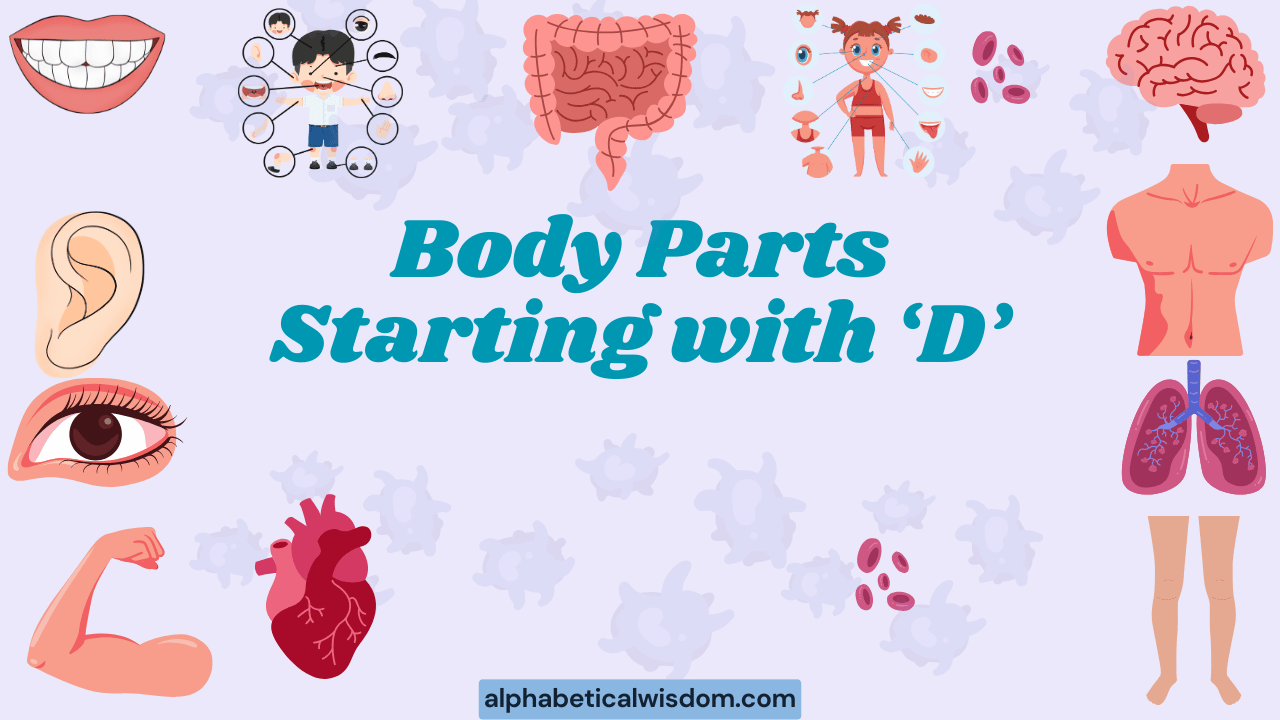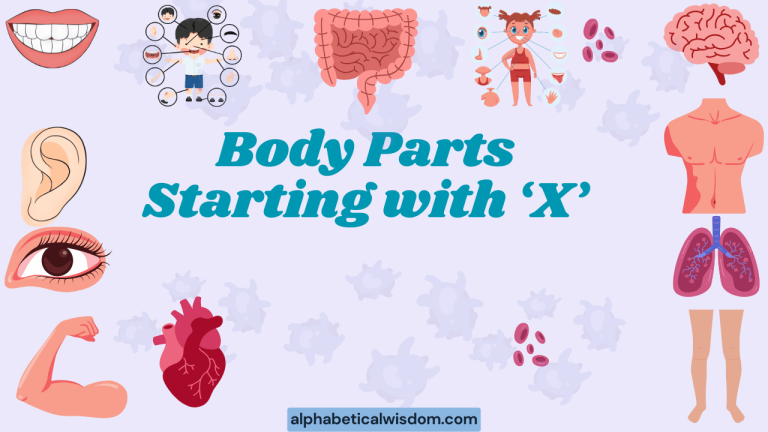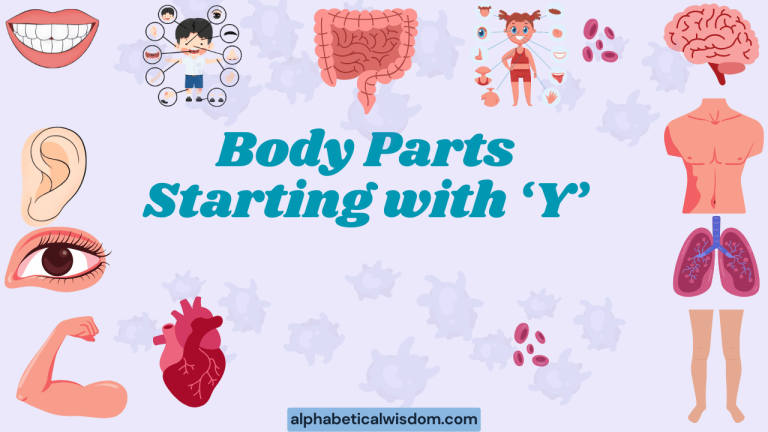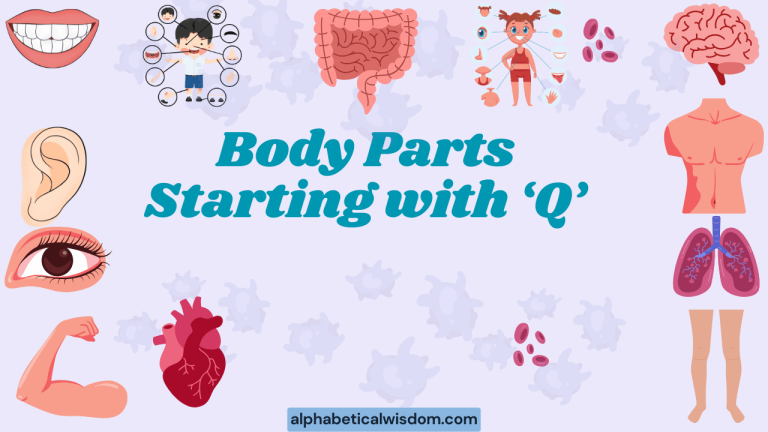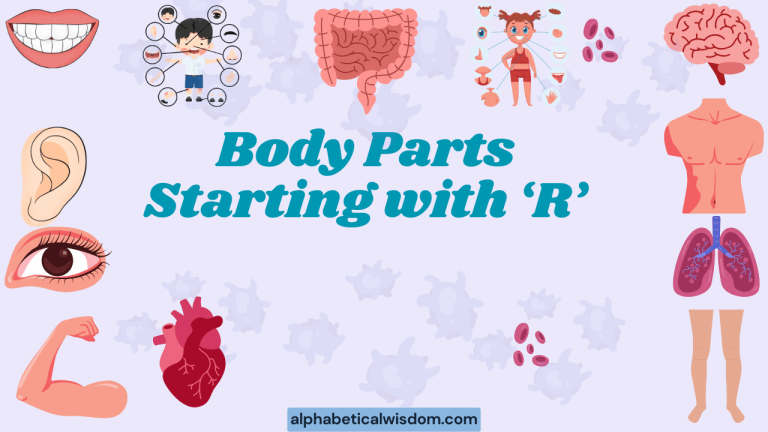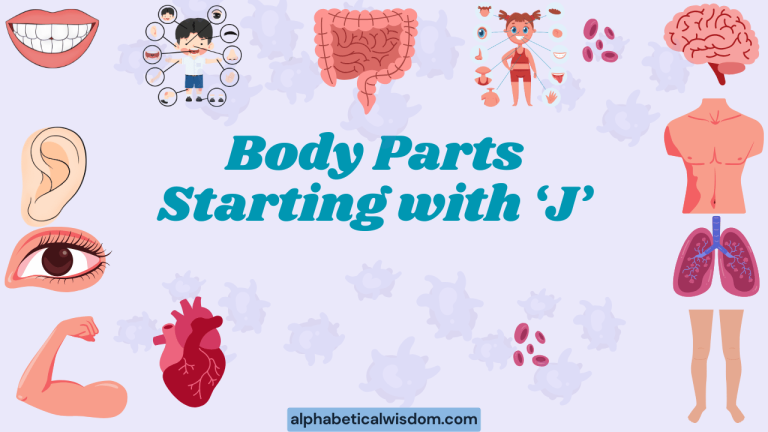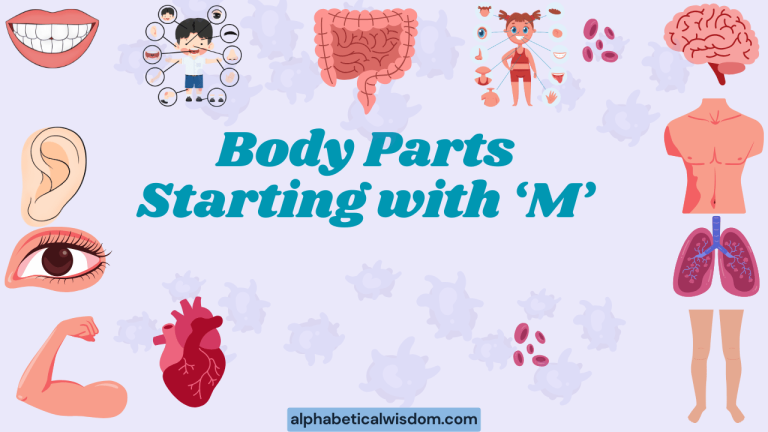Body Parts Starting with ‘D’: A Grammatical Exploration
Understanding the vocabulary related to body parts is essential for effective communication in English. Body parts starting with the letter ‘D’, such as ‘diaphragm’ and ‘digits,’ are commonly used in various contexts, from medical discussions to everyday conversations.
This article aims to provide a comprehensive guide to these terms, focusing on their definitions, grammatical functions, usage, and common mistakes. Whether you are an English language learner, a healthcare professional, or simply someone interested in expanding your vocabulary, this resource will offer valuable insights and practical exercises to enhance your understanding and fluency.
This article will systematically explore the definitions, grammatical structures, and contextual usages of body parts that begin with the letter ‘D’. We will delve into detailed explanations and provide numerous examples to illustrate their correct application.
Furthermore, we will address typical errors and offer practical exercises to reinforce your learning. By the end of this guide, you will have a solid grasp of these terms and be able to use them confidently in your spoken and written English.
Table of Contents
- Introduction
- Definition of Body Parts Starting with ‘D’
- Structural Breakdown
- Types and Categories
- Examples
- Usage Rules
- Common Mistakes
- Practice Exercises
- Advanced Topics
- FAQ
- Conclusion
Definition of Body Parts Starting with ‘D’
Body parts starting with the letter ‘D’ encompass a range of anatomical structures, each with specific functions and roles within the human body. These terms, while not as numerous as those starting with other letters, are crucial in medical, scientific, and everyday contexts.
Understanding their meanings and grammatical functions is essential for precise and effective communication.
These body parts can be classified into different categories based on their location (internal or external) and function (e.g., respiratory, digestive, integumentary). For example, the diaphragm is a vital internal muscle for breathing, while digits refer to the fingers and toes, which are external appendages used for grasping and locomotion. The dermis is a layer of skin, and the duodenum is part of the small intestine.
Structural Breakdown
The structural breakdown of these terms involves understanding their grammatical function within a sentence. Typically, these body parts function as nouns, which can be singular or plural.
They can also be modified by adjectives to provide more specific information. For instance, “the strong diaphragm” or “the nimble digits”.
Additionally, these nouns can be used as subjects, objects, or complements within a sentence. The structure of sentences involving these terms often follows standard English sentence patterns, such as Subject-Verb-Object (SVO). For example, “The doctor examined the patient’s digits.” Here, “doctor” is the subject, “examined” is the verb, and “digits” is the object.
Understanding the grammatical role of these terms helps in constructing grammatically correct and meaningful sentences. The following sections will delve deeper into specific examples and usage rules.
Types and Categories
Body parts starting with ‘D’ can be categorized based on their location and function within the human body. This classification helps in understanding their specific roles and how they interact with other body systems.
Internal Organs
Internal organs are those located within the body cavities, such as the chest and abdomen. They perform essential functions that are often not visible externally.
The diaphragm is a primary example of an internal organ starting with ‘D’. It is a large, dome-shaped muscle located at the base of the chest cavity, separating the thoracic and abdominal cavities. Its primary function is to facilitate breathing by contracting and relaxing to change the volume of the chest cavity.
Another example is the duodenum, the first part of the small intestine. It plays a crucial role in digestion by receiving partially digested food from the stomach and mixing it with bile from the liver and pancreatic juice from the pancreas to further break down the food.
External Parts
External parts are those visible on the surface of the body. They often serve protective, sensory, or locomotive functions.
Digits, referring to fingers and toes, are a prime example of external body parts starting with ‘D’. These appendages are essential for grasping, manipulating objects, and locomotion. Each digit contains bones, muscles, nerves, and blood vessels, allowing for a wide range of movements and sensory feedback.
The dermis, although not a distinct organ in itself, is a significant layer of the skin, which is the body’s largest organ. It lies beneath the epidermis and contains various structures, including hair follicles, sweat glands, and nerve endings. The dermis provides support, elasticity, and sensation to the skin.
Examples
To further illustrate the usage of body parts starting with ‘D’, the following sections provide detailed examples in various contexts. These examples demonstrate how these terms can be used in sentences, phrases, and common expressions.
Diaphragm Examples
The diaphragm is a crucial muscle for breathing. Here are some examples of how it is used in sentences:
| # | Sentence |
|---|---|
| 1 | The doctor explained how the diaphragm contracts during inhalation. |
| 2 | Deep breathing exercises help strengthen the diaphragm. |
| 3 | A spasm in the diaphragm can cause hiccups. |
| 4 | The singer relied on their diaphragm for powerful vocal projection. |
| 5 | Proper posture can improve the function of the diaphragm. |
| 6 | The patient’s diaphragm was damaged in the accident. |
| 7 | The anatomy class studied the structure of the diaphragm. |
| 8 | The baby’s breathing was shallow, indicating a weak diaphragm. |
| 9 | The yoga instructor emphasized the importance of diaphragmatic breathing. |
| 10 | The X-ray showed the position of the diaphragm. |
| 11 | He controlled his breathing using his diaphragm, allowing him to remain calm under pressure. |
| 12 | The runner felt a stitch in their side, likely due to improper use of the diaphragm. |
| 13 | The therapist taught her how to relax her diaphragm to reduce anxiety. |
| 14 | Research indicates that a healthy diaphragm can improve overall respiratory health. |
| 15 | The athlete trained to increase their diaphragm‘s capacity for deeper breaths. |
| 16 | During singing lessons, she learned to control the airflow from her diaphragm to improve her tone. |
| 17 | The doctor noted that his diaphragm was unusually high, which could indicate a medical issue. |
| 18 | The speaker used their diaphragm to project their voice to the back of the auditorium. |
| 19 | She practiced breathing exercises to increase the flexibility of her diaphragm. |
| 20 | The surgeon carefully avoided damaging the diaphragm during the operation. |
| 21 | The scuba diver relied on controlled breathing through their diaphragm to conserve air underwater. |
| 22 | The comedian’s jokes were so funny that the audience members were clutching their sides and diaphragms. |
| 23 | Medical tests confirmed that his diaphragm was functioning at optimal levels. |
| 24 | The respiratory therapist demonstrated how to properly engage the diaphragm during breathing exercises. |
| 25 | The patient’s cough was triggered by irritation of the diaphragm. |
| 26 | The weightlifter focused on maintaining proper breathing technique to support their diaphragm during heavy lifts. |
| 27 | The mindfulness exercise involved focusing on the movement of the diaphragm with each breath. |
| 28 | The physiotherapist assessed the strength and mobility of the patient’s diaphragm. |
| 29 | The child’s shallow breathing was a cause for concern, as it suggested potential issues with their diaphragm. |
| 30 | He used his diaphragm to create a deep, resonant tone while playing the didgeridoo. |
Digits Examples
Digits refer to fingers and toes. Here are some examples of how this term is used in sentences:
| # | Sentence |
|---|---|
| 1 | She counted the money using her digits. |
| 2 | The climber relied on the strength of their digits to grip the rock face. |
| 3 | The injury affected the mobility of his digits. |
| 4 | The pianist’s nimble digits danced across the keys. |
| 5 | He warmed up his digits before the performance. |
| 6 | The doctor examined the patient’s digits for signs of arthritis. |
| 7 | The artist used their digits to sculpt the clay with precision. |
| 8 | The child learned to count on their digits. |
| 9 | The typist’s digits flew across the keyboard. |
| 10 | The cold weather made her digits numb. |
| 11 | He carefully manipulated the delicate instrument with his steady digits. |
| 12 | Frostbite can severely damage the digits. |
| 13 | The surgeon specialized in reconstructive surgery of the digits. |
| 14 | The dancer’s expressive digits added to the performance’s emotional impact. |
| 15 | The craftsman meticulously carved the intricate design using only his digits. |
| 16 | The child proudly showed off their painted digits after a day of arts and crafts. |
| 17 | The pianist practiced scales daily to maintain the dexterity of their digits. |
| 18 | The doctor noted the discoloration of the patient’s digits, which could indicate a circulatory problem. |
| 19 | The climber carefully chalked their digits to improve grip on the rock face. |
| 20 | The seamstress used her nimble digits to thread the needle with ease. |
| 21 | The athlete taped their digits to prevent injuries during the game. |
| 22 | He counted the beads using his digits, ensuring each strand had the correct number. |
| 23 | The surgeon’s steady digits were crucial for the delicate operation. |
| 24 | Her frostbitten digits throbbed with pain as they slowly warmed up. |
| 25 | The artist used their digits to blend the colors on the canvas, creating a smooth transition. |
| 26 | The child’s tiny digits struggled to grasp the large crayon. |
| 27 | The calluses on his digits were a testament to years of hard work in the garden. |
| 28 | The musician’s digits moved with incredible speed and precision across the guitar strings. |
| 29 | The doctor prescribed a cream to help heal the cracked skin on her digits. |
| 30 | He carefully used his digits to untangle the delicate fishing line. |
Dermis Examples
The dermis is a layer of skin beneath the epidermis. Here are some examples:
| # | Sentence |
|---|---|
| 1 | The dermis contains collagen and elastin fibers that provide skin with its elasticity. |
| 2 | Damage to the dermis can result in scarring. |
| 3 | The dermatologist explained the importance of protecting the dermis from UV radiation. |
| 4 | The dermis houses hair follicles, sweat glands, and nerve endings. |
| 5 | The depth of a tattoo depends on how far the ink penetrates into the dermis. |
| 6 | The wound reached deep into the dermis, requiring stitches. |
| 7 | The cream was designed to hydrate the dermis and improve skin texture. |
| 8 | The biopsy revealed abnormalities in the dermis. |
| 9 | The aging process affects the structure and function of the dermis. |
| 10 | The burn damaged both the epidermis and the dermis. |
| 11 | The lotion helped to soothe the irritated dermis after sun exposure. |
| 12 | The doctor explained how the dermis plays a crucial role in regulating body temperature. |
| 13 | The scar tissue formed as the dermis healed from the injury. |
| 14 | The cosmetic procedure aimed to stimulate collagen production in the dermis. |
| 15 | The research focused on understanding the cellular composition of the dermis. |
| 16 | The scientist studied the effects of different chemicals on the dermis. |
| 17 | The skin graft was necessary to replace the damaged dermis. |
| 18 | The dermatologist recommended treatments to improve the health of the dermis. |
| 19 | The patient’s skin condition was caused by an inflammation of the dermis. |
| 20 | The dermis provides the skin with its strength and resilience. |
| 21 | He applied sunscreen to protect the dermis from harmful UV rays. |
| 22 | The laser treatment targeted the dermis to stimulate collagen production. |
| 23 | The doctor explained that the dermis is essential for wound healing. |
| 24 | The cream was formulated to penetrate deep into the dermis. |
| 25 | The study examined the changes in the dermis with age. |
| 26 | The biopsy showed that the dermis was healthy and well-nourished. |
| 27 | The treatment aimed to repair the damaged collagen in the dermis. |
| 28 | The patient’s skin was sensitive due to the thinness of the dermis. |
| 29 | The dermis plays a critical role in skin regeneration. |
| 30 | The scientist conducted research on the structure and function of the dermis. |
Duodenum Examples
The duodenum is the first part of the small intestine. Here are some examples of how it is used in sentences:
| # | Sentence |
|---|---|
| 1 | The duodenum receives chyme from the stomach. |
| 2 | The doctor explained that the duodenum plays a crucial role in digestion. |
| 3 | The ulcer was located in the duodenum. |
| 4 | The duodenum is where bile and pancreatic enzymes mix with food. |
| 5 | The biopsy revealed inflammation in the duodenum. |
| 6 | The surgery involved removing a blockage in the duodenum. |
| 7 | The patient was experiencing pain due to a problem with their duodenum. |
| 8 | The gastroenterologist examined the duodenum using an endoscope. |
| 9 | The food is further broken down in the duodenum before absorption. |
| 10 | The duodenum is connected to the stomach and the jejunum. |
| 11 | The medication was designed to protect the lining of the duodenum. |
| 12 | The tests showed that the duodenum was functioning properly. |
| 13 | The doctor suspected a tumor in the duodenum based on the patient’s symptoms. |
| 14 | The duodenum is essential for nutrient absorption. |
| 15 | The inflammation in the duodenum was causing severe discomfort. |
| 16 | The surgeon performed a procedure to repair a perforation in the duodenum. |
| 17 | The patient’s diet was adjusted to reduce irritation of the duodenum. |
| 18 | The examination revealed that the duodenum was healthy and free of abnormalities. |
| 19 | The duodenum receives secretions from the pancreas and gallbladder. |
| 20 | The study focused on the role of the duodenum in regulating blood sugar levels. |
| 21 | The chyme enters the duodenum after being processed in the stomach. |
| 22 | The doctor ordered tests to evaluate the function of the duodenum. |
| 23 | The patient was diagnosed with an infection in the duodenum. |
| 24 | The duodenum plays a key role in the digestive process. |
| 25 | The surgeon removed a polyp from the duodenum during the colonoscopy. |
| 26 | The doctor explained the symptoms of duodenum-related disorders. |
| 27 | The medication helps soothe the inflammation in the duodenum. |
| 28 | The nutritionist advised the patient on foods to avoid to protect the duodenum. |
| 29 | The duodenum is a critical part of the small intestine. |
| 30 | The gastroenterologist took a biopsy of the duodenum to check for abnormalities. |
Usage Rules
When using body parts starting with ‘D’, it’s important to follow standard English grammar rules. These terms typically function as nouns and must agree in number with the verb. For example, “The diaphragm contracts” (singular) and “The patient’s digits are swollen” (plural).
Adjectives can be used to modify these nouns to provide more specific information. For instance, “the healthy diaphragm” or “the nimble digits“. Articles (a, an, the) are also used depending on the context. “The” is used to refer to a specific diaphragm or digits, while “a” or “an” can be used when referring to a general instance.
Prepositions are often used to indicate location or relationship. For example, “pain in the diaphragm” or “movement of the digits“. Understanding these basic rules will help ensure accurate and effective communication.
Common Mistakes
One common mistake is using the singular form when the plural is required, or vice versa. For example, saying “The digit are swollen” is incorrect; it should be “The digits are swollen.” Another mistake is misusing articles, such as saying “Diaphragm is important” instead of “The diaphragm is important” when referring to a specific diaphragm.
Another frequent error involves incorrect preposition usage. For instance, saying “pain on the diaphragm” instead of “pain in the diaphragm” is incorrect. Paying attention to these common errors and practicing correct usage will help improve accuracy.
Here’s a table illustrating common mistakes:
| Incorrect | Correct |
|---|---|
| The digit are swollen. | The digits are swollen. |
| Diaphragm is important. | The diaphragm is important. |
| Pain on the diaphragm. | Pain in the diaphragm. |
| He injured his digit. | He injured his digits. |
Practice Exercises
To reinforce your understanding, complete the following exercises. These exercises will test your knowledge of the definitions, usage, and grammar of body parts starting with ‘D’.
Exercise 1: Fill in the Blanks
Fill in the blanks with the correct body part starting with ‘D’.
| # | Question | Answer |
|---|---|---|
| 1 | The __________ is a muscle used for breathing. | diaphragm |
| 2 | We use our __________ to grasp objects. | digits |
| 3 | The __________ contains collagen and elastin. | dermis |
| 4 | The __________ is the first part of the small intestine. | duodenum |
| 5 | The doctor checked the mobility of her __________. | digits |
| 6 | Breathing exercises can strengthen the __________. | diaphragm |
| 7 | The tattoo ink is injected into the __________. | dermis |
| 8 | The __________ is responsible for receiving chyme from the stomach. | duodenum |
| 9 | The pianist’s __________ moved swiftly across the keys. | digits |
| 10 | He felt a sharp pain in his __________. | diaphragm |
Exercise 2: Sentence Correction
Correct the following sentences that contain errors in the use of body parts starting with ‘D’.
| # | Incorrect Sentence | Correct Sentence |
|---|---|---|
| 1 | The digit is swollen. | The digits are swollen. |
| 2 | Diaphragm help us breathe. | The diaphragm helps us breathe. |
| 3 | The pain on my duodenum is severe. | The pain in my duodenum is severe. |
| 4 | He has a strong digits. | He has strong digits. |
| 5 | The dermis are important for skin elasticity. | The dermis is important for skin elasticity. |
| 6 | I use my digit to type. | I use my digits to type. |
| 7 | The food goes on the duodenum. | The food goes into the duodenum. |
| 8 | The dermis provide support to skin. | The dermis provides support to the skin. |
| 9 | His diaphragm are very strong. | His diaphragm is very strong. |
| 10 | She hurted her digit while climbing. | She hurt her digits while climbing. |
Exercise 3: Matching
Match the body part with its function.
| # | Body Part | Function |
|---|---|---|
| 1 | Diaphragm | (a) Aids in digestion |
| 2 | Digits | (b) Provides skin elasticity |
| 3 | Dermis | (c) Facilitates breathing |
| 4 | Duodenum | (d) Used for grasping |
Answers:
- 1 – c
- 2 – d
- 3 – b
- 4 – a
Advanced Topics
For advanced learners, understanding the medical terminology and idiomatic expressions associated with body parts starting with ‘D’ can further enhance their language skills.
Medical Terminology
In medical contexts, terms like diaphragmatic hernia (a condition where abdominal organs protrude through the diaphragm) and duodenal ulcer (an ulcer in the lining of the duodenum) are commonly used. Familiarity with these terms is essential for healthcare professionals and those studying medicine.
Understanding the etymology of these terms can also be helpful. For example, “duodenum” comes from the Latin word “duodeni,” meaning “twelve each,” referring to its length being about twelve finger breadths long.
Idiomatic Expressions
While there aren’t many common idiomatic expressions specifically using “diaphragm,” “digits,” “dermis,” or “duodenum,” the general concept of body parts is often used in idioms. For example, “to keep one’s fingers crossed” (related to digits) means to hope for good luck.
Recognizing and understanding these idiomatic expressions can add depth to your understanding of the English language.
Another related idiom is “to have something at your fingertips,” which implies having easy access to information or skills, again connecting to the concept of digits and their utility.
FAQ
Here are some frequently asked questions about body parts starting with ‘D’:
- What is the main function of the diaphragm?
The main function of the diaphragm is to facilitate breathing. It contracts and relaxes to change the volume of the chest cavity, allowing air to enter and exit the lungs.
- What are digits, and why are they important?
Digits refer to fingers and toes. They are important for grasping, manipulating objects, locomotion, and providing sensory feedback.
- What is the dermis, and what does it do?
The dermis is the layer of skin beneath the epidermis. It contains collagen and elastin fibers that provide skin with its elasticity and support. It also houses hair follicles, sweat glands, and nerve endings.
- Where is the duodenum located, and what is its role?
The duodenum is the first part of the small intestine, located between the stomach and the jejunum. It plays a crucial role in digestion by receiving chyme from the stomach and mixing it with bile and pancreatic enzymes.
- How can I improve the health of my diaphragm?
You can improve the health of your diaphragm through deep breathing exercises, proper posture, and avoiding smoking. Singing and playing wind instruments can also strengthen the diaphragm.
- What are some common injuries that can affect the digits?
Common injuries that can affect the digits include fractures, sprains, dislocations, cuts, and burns. Frostbite can also severely damage the digits.
- What are some diseases that can affect the dermis?
Several diseases can affect the dermis, including eczema, psoriasis, dermatitis, and skin cancer. Protecting the skin from UV radiation and maintaining good hygiene can help prevent these conditions.
- What are some common problems associated with the duodenum?
Common problems associated with the duodenum include ulcers, inflammation (duodenitis), blockages, and tumors. Maintaining a healthy diet and avoiding excessive alcohol consumption can help prevent these issues.
- Is it possible to live without a duodenum?
While it’s possible to survive without a duodenum, it significantly impacts digestion and nutrient absorption. Surgical removal of the duodenum (duodenectomy) is rare and typically only performed in cases of severe disease, such as cancer. Patients who undergo this procedure require careful dietary management and nutritional support.
- How does age affect the
dermis?
As we age, the dermis undergoes several changes. Collagen and elastin production decreases, leading to reduced skin elasticity and the formation of wrinkles. The dermis also becomes thinner and more susceptible to damage. Maintaining a healthy lifestyle, using sunscreen, and moisturizing the skin can help mitigate these effects.
Conclusion
Understanding body parts starting with the letter ‘D’—such as diaphragm, digits, dermis, and duodenum—is essential for effective communication in various contexts, from medical discussions to everyday conversations. This article has provided a comprehensive guide to these terms, covering their definitions, grammatical functions, usage rules, and common mistakes.
By mastering these terms and practicing their correct usage, you can enhance your English language skills and communicate more confidently and accurately. Whether you are an English language learner, a healthcare professional, or simply someone interested in expanding your vocabulary, the knowledge and exercises provided in this guide will be invaluable.
